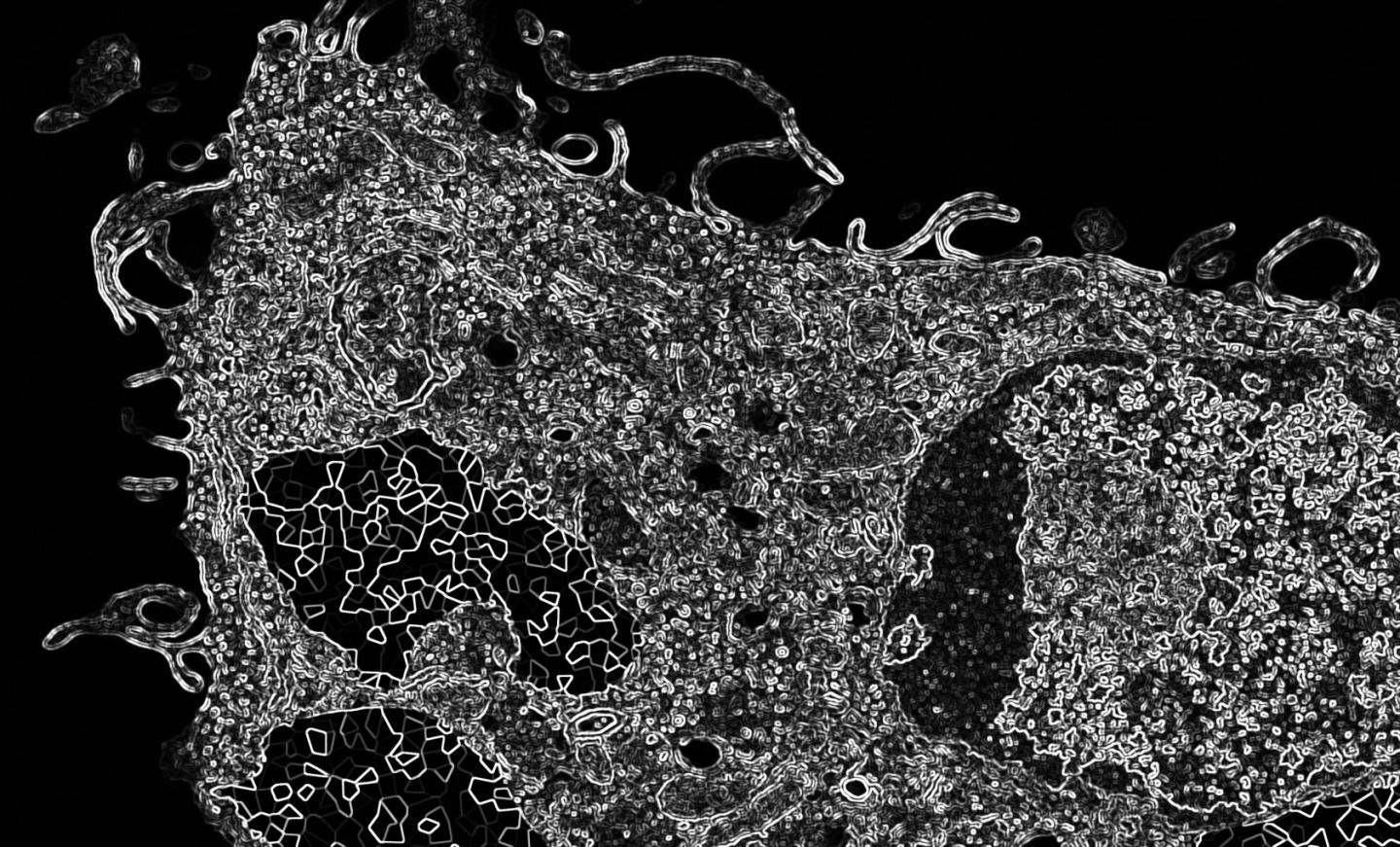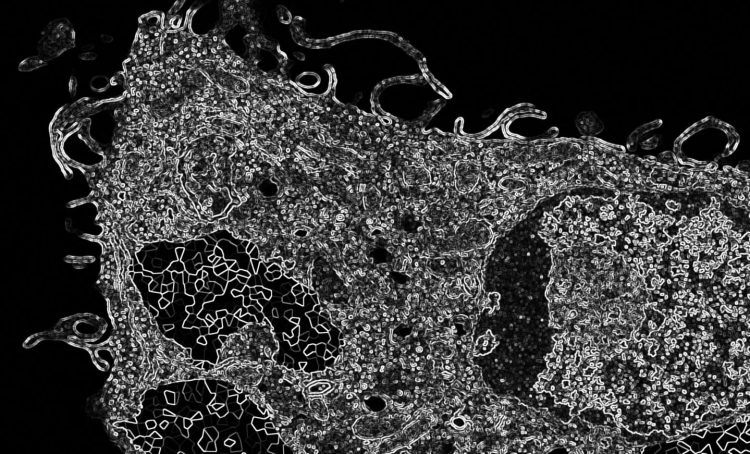Findings could be used to treat sickle cell disease and malaria patients, while opening up diverse research avenues across immunology, parasitology, neuroscience, microbiology, and even urology

Credit: Hamza lab
Most people have some idea of how important iron is to their health, but Iqbal Hamza, professor in Animal and Avian Sciences, has made his seventeen-year career at the University of Maryland all about the study of iron and heme trafficking and regulation in the body. With his latest publication in eLife, Hamza has discovered a never-before-seen protection mechanism in mammals against the toxicity of free heme in the body – the production of a crystallized form of heme known as hemozoin. The production of hemozoin was previously thought only to be possible by blood-feeding organisms like those that cause malaria, but observing this protective phenomenon in mammals opens up entirely new lines of research into how heme tolerance occurs in humans and how this can be used to treat not only malaria and other parasitic infections, but also hemolytic diseases like sickle cell disease.
“Every second, our body recycles over 1000 trillion heme-iron obtained from breaking down hemoglobin from dying red blood cells,” says Hamza. “The gene that regulates heme transport is highly expressed in the spleen, liver, and bone marrow. Specialized macrophages help nurse and make new red blood cells, but they also help clear out the old ones. In fact, 5 million red blood cells are dying every second from age. These macrophages then help to recycle the heme-iron and take it back to the bone marrow. This is the heme-iron recycling process, and it is happening at an astonishing rate every second. But this study shows that mutating the main heme transporter in mice blocks heme recycling, and instead of this being lethal, it forms hemozoin. This has never been seen in mammals before.”
Hemozoin is a crystallized form of heme that is much less toxic and damaging to the system. Hamza previously identified the gene (known as HRG1) that regulates heme transport in his lab, first using a model organism called Caenorhabditis elegans, a bloodless worm that does not create its own heme like mammals do, making it easier to study and track heme transport in their bodies without getting confused as to what heme is coming from where. He then identified a similar gene in humans and wanted to test its function by knocking it out in a mammal to confirm its role in heme transport and recycling. Mouse genetics were performed in collaboration with David Bodine, senior investigator in the Genetics and Molecular Biology Branch at the National Human Genome Research Institute (NHGRI), an institute of the National Institutes of Health (NIH). This study not only confirmed the role of the gene in heme transport, but led to the discovery that mammals will find a way to survive under these conditions through the production of hemozoin.
“Heme-iron recycling throughout the body is like a constant flow of water in a looped system,” says Hamza. “If you mess up one step, you can clog the system and cause build up. Without hemozoin formation, that heme build up would and should be lethal because free heme is so toxic. And even intuitively, we would have expected these mice to be significantly impaired. But the mice don’t show any kind of obvious impairments and look healthy from the outside. Up till now, any mammal who manages to accumulate heme ends up dying because heme is toxic. So how can these animals become heme tolerant?” Heme and iron measurements were done in collaboration with John Phillips, professor of pathology from the Division of Hematology, University of Utah School of Medicine.
Furthermore, if this phenomenon is being observed in mice, Hamza is “willing to bet” it is also occurring in humans. “Heme-tolerant patients could be mistaken as malaria patients, because when hemozoin is found in a human subject, it is assumed that the hemozoin is being made by the malaria parasite. We didn’t know that mammals could make their own hemozoin until now.”
Hamza continues, “I bet that there must be humans with hemozoin in their liver, spleen, and marrow, and it is only a matter of time before we find them. Our data predicts that these people will be protected from heme toxicity. We have to actively go and look for these patients so we can study the mutation of this gene in humans, because they will have less severe ailments than what we would typically expect.”
But finding these patients is important for the future study of this mutation and for potential therapeutic functions, as this mechanism could be used to provide relief for patients that suffer from diseases like sickle cell disease or malaria.
“Blocking the heme transporter gene transiently should be able to overcome acute heme toxicity in diseases such as sickle cell and malaria where the cells become significantly injured, causing pain. This would create some hemozoin in the body, but the animals should survive giving them extra time to reprogram themselves to deal with heme toxicity. This could have an important therapeutic advantage during hemolysis.”
Beyond this, there are a slew of other research questions that are opened up and can now be explored thanks to this discovery in mammals. The mechanisms underlying how hemozoin is made and how heme tolerance occurs are unknown, and being able to answer these questions in a human cell are important to the future of this work. Hamza has already had a lot of interest in this work, with collaborators coming out of fields from immunology to parasitology to neuroscience to microbiology. There are even urologists who think this pathway may be important in urinary tract infections and want to collaborate with Hamza.
“The discovery is very exciting, and I’ve gotten several calls already about all the different directions we can take this,” says Hamza. “It’s great to see the support in the scientific community, and we are already planning to search for this in humans to continue the path towards treatment of parasitic diseases, hemolytic diseases, like sickle cell, and many others.”
###
The paper entitled, “Hemozoin produced by mammals confer heme tolerance,” is available at eLife, DOI: 10.7554/eLife.49503.
Additional collaborators:
X-ray fluorescence microscopy was performed in collaboration with Martina Ralle, assistant professor in the Department of Molecular and Medical Genetics, Oregon Health and Science University. Macrophage analyses were performed in collaboration with Dr. Malay Haldar, assistant professor of pathology in the Department of Pathology and Laboratory Medicine, University of Pennsylvania. X-ray powder diffraction analyses were performed in collaboration with Dr. Eiji Nishibori from University of Tsukuba, Japan and Hiroshi Sugimoto, structural biologist from RIKEN SPring-8 Center, Japan.
Media Contact
Samantha Watters
[email protected]
Original Source
https:/
Related Journal Article
http://dx.





